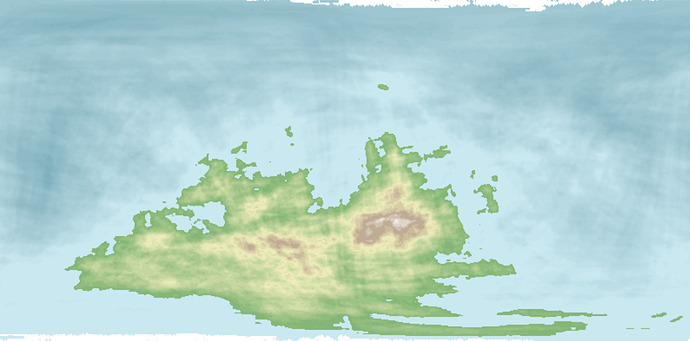Terra Nova
Terra Nova is a Seed World Speculative Evolution Project, (which I have created) in which a group of Common Octopodes, Magellanic Penguins, and African Elephants along with the creatures that they feed on are placed on an Earth-Like planet, and are left to evolve by themselves, similar to Serina, World of Birds.
Fauna
Let me introduce you to the native fauna:
Magellanic penguin
Latin Name: Spheniscus Magellanicus
Diet:
- Anchovy
- Squid
- Cuttlefish
Common Octopodes
Latin Name: Octopus Vulgaris
Diet:
- Crab
- Crayfish
- Copepods
African Elephant
Latin Name: Loxodonta africana
Diet:
- Watermelons
- Bamboo
- Shrubs
Note: The diet of the creatures will be implemented into Eden Nova, along with grasses, flowers, and other non-animals, along with some micro-organisms and small invertebrates and insects, along with other stuff as well.
Terra Nova
This Planet has Earth-like conditions, with shallow Oceans and mostly water. It has a radius of 0.87% of Earth, with a gravity of 0.98% that of Earth. It has three Luna-like moons: Terra Nova I, Terra Nova II, and Terra Nova III. The rest is mostly the same.
Now everything has been explained, let’s start:
The Early Primisaetas:
The First 10,0000 Years.
Years 1-1000
During the First millennia, the population exponentially increased, due to the abundance of food and the lack of predators. Not much happens in the genetics department, but some watermelons have adapted to live in the tidal zones of rivers and lakes, floating at the surface at high tide.
Years 1000-5000
For the next few thousand years, nothing really happens. Some Octopus Populations have adapted to consume the insects found on and inside the melons located in the tidal zone.
Years 5000-10000
Now we are almost 10 millennia in, the populations have begun to crash. Despite there being no natural predators, overpopulation and over-consumption means that contest over once-abundant sources of food is developing. The first to adapt is a small octopus population. A group of them have now formed a new breed of octopus that specializes in poaching penguin eggs, a previously untapped food source. Another Octopus population has essentially evolved cannibalism, feasting mainly on other Octopedes and their eggs.
Most species have evolved breeds of different sizes, with there being both slightly smaller and slightly larger versions of most species. There are also Breeds of elephants that are better adapted to eating the watermelons found in shallow rivers and lakes. Speaking of watermelons, they can now be found in permanently submerged but still shallow areas, with the leaves, flowers and fruits floating on long, submerged vines.
